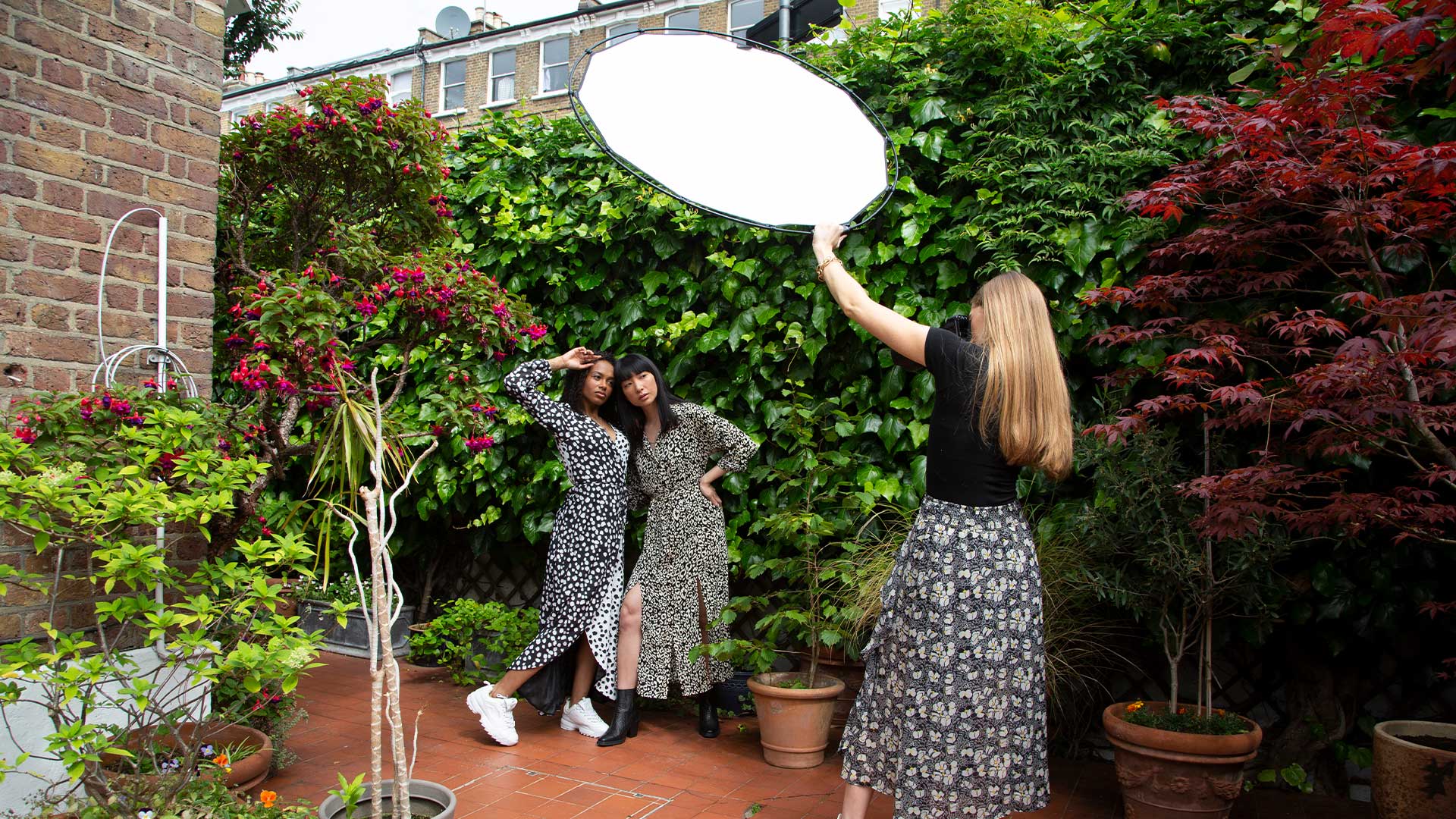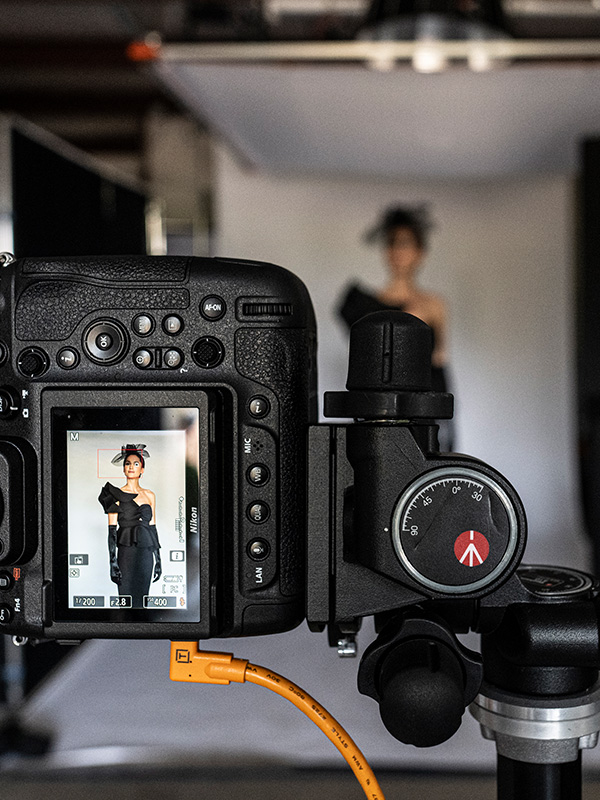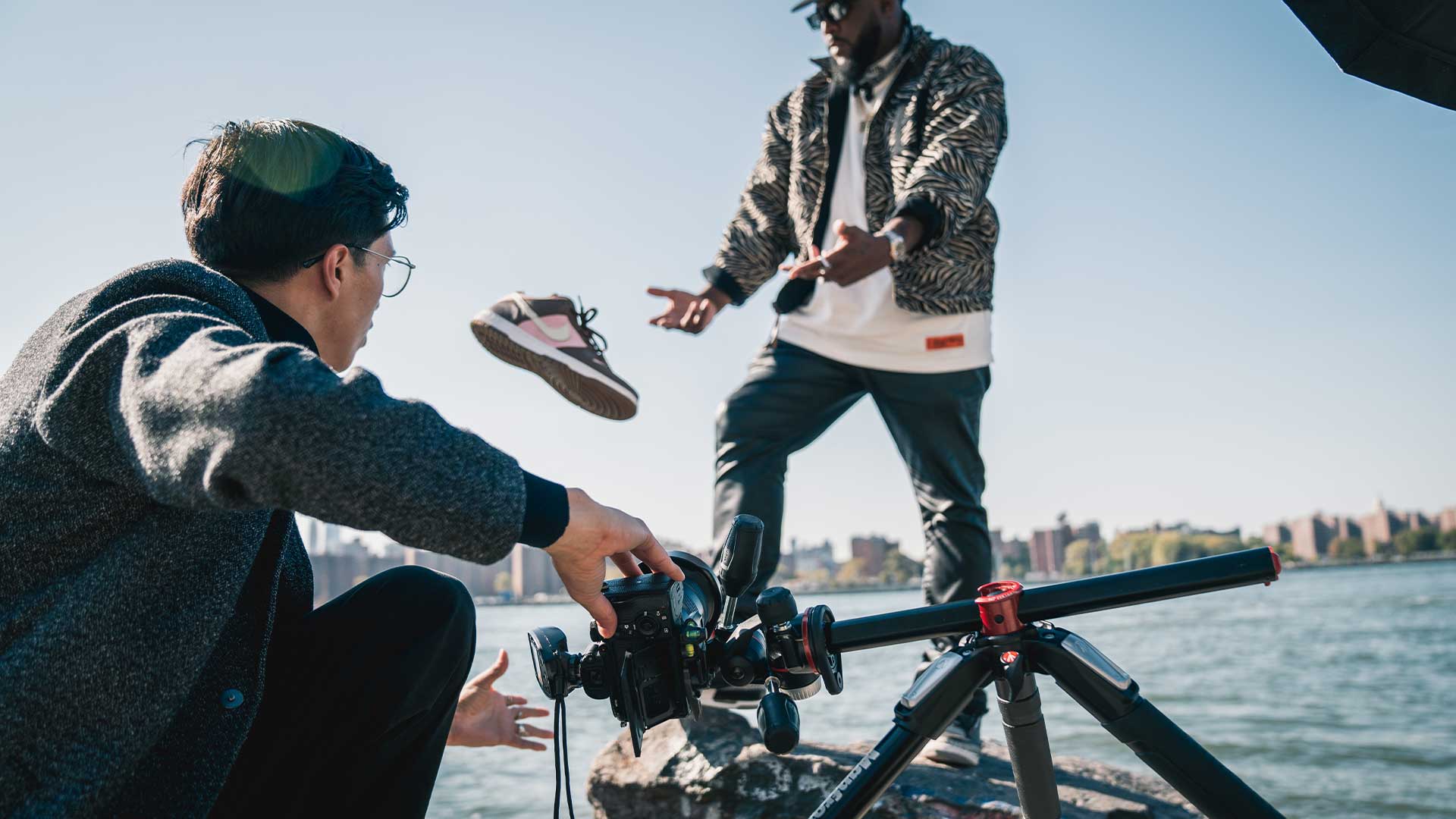London Fashion Week:
Capture The Moment With Street-Style Photography


During London Fashion Week the best high-end designers all gather in one spot to reveal their latest collections. But the runways are not the only place to discover upcoming trends.
The streets of London are full of models, celebrities, and influencers too, and they always dress to impress. For the keen-eyed street-style photographer, this is a chance to capture these fashion icons at their most spontaneous - right there on the street.
Harnessing street-style photography at London Fashion Week
If you want to capture the beauty and sophistication of Fashion Week, you don’t have to have a ticket. Largely, it’s about being in the right place at the right time to catch the attendees on their way to a show or entertainment venue. However, learning the art of street fashion photography can greatly improve your chances of getting the results you’re after. And since everything moves so fast, there’s no time for mistakes.


What is street-style photography?
A subset of the broader street photography genre, street-style photography is an exciting blend of candid snapshots and fashion storytelling.
Unstaged and spontaneous, it thrives in dynamic outdoor settings. The location is often bustling city streets, which bring to life the tales of these fashion-forward individuals. The essence of street photography lies in its storytelling capacity. A single shot can narrate a tale, depict a mood, or even capture a snapshot of societal norms.
While traditional street photography leans towards depicting a particular narrative, street-style photography extends this idea, giving you an intimate glimpse into the subject's fashion choices. It aims to showcase their personality, style, and individuality through their fashion.
What are the characteristics of street-style photography?
If street fashion photography is nothing else, it’s authentic. It shows genuine individuals, expressing their personal style through unique fashion choices, rather than copying the clichés of mainstream fashion.
Street-style photographers have a keen eye for this authenticity and consistently spotlight those who wear their personality on their sleeves, quite literally.
While brands incorporating streetwear photography in their campaigns might seem similar, often these images lack the spirit of true street-style photography. The use of models, professional lighting and pre-planned styling can subdue the raw, authentic nature of this type of photography.
The key difference lies in the candid and spontaneous moments captured. It trades the rehearsed glamour of the studio for the unpredictable charm of the streets and shows fashion as it’s worn in the real world.
How do you take good street-style photos?
If you’re new to photography, this field might seem intimidating. But even established photographers can find this difficult.
Many elements are out of the photographer’s control, like weather, lighting, etc. At the same time, while it seems improvised, street fashion photography requires preparation. However, it might be in ways that you haven’t considered before. So here are our top tips.
1. Work with natural lighting
Lighting can be unpredictable when you shoot outside. You don’t want your subject to be over-exposed but, in low light, their outfit might not have the same impact. If you can, shoot in the morning or evening to avoid the sun being too intense.
Golden hour is always best for soft lighting, as it will offer an even, warmer light that’s gentler on your subject.
Even if the day is cloudy, it’s not a complete disaster. You can always use a street light or a shop front for artificial lighting. You can also create interesting compositions by positioning your subject opposite to a shadowed area.
Nadia Krawiecka, a fashion and beauty photographer based in Paris does this well. In her photo of Natalia Verza wearing Balmain, she used these elements of shade to her advantage and added a sense of drama to the scene.


2. Search for the perfect location
You don’t have to leave everything in street-style photography up to chance. Even if you plan on taking candid images, you can still pick your location beforehand.
It might be a graffitied wall or a beautiful stoop - that’s up to you. This will help you add more interest to the photo.
A good example is Italian street-style photographer Vincenzo Grillo’s work. In his picture from the New York Fashion Week, the photographer chose an ornate black railing as the backdrop.
The model’s jacket and boots match the black of the railing, and even the desaturated colours of the building match her skin tone.
This then makes for a greater contrast with the green body and white trim of the dress, which is instantly elevated as the subject of the photo.
3. Get your camera settings right
It’s best to know your settings before you start shooting. This is helpful whether you take candid pictures or approach your subjects for permission. In either situation, this is a fast-paced shoot, and you don’t want to mess up the result.
Here are our recommendations:
- Always shoot in RAW. The significant increase in visual data will enable you to have much more flexibility with post-processing.
- Use a wider aperture to make your subject the focus of the frame with a desirable, blurry bokeh effect in the background. However, be sure to stop down the aperture - to an f/8 at least - so some of the urban details around your subject are maintained.
- Use a higher shutter speed to ensure tack-sharp photos of your subject and their clothes. Street photography doesn’t always afford you the cooperation and stillness of a studio shoot, so we recommend at least a shutter speed of 1/125.
- Auto-ISO is going to be your choice of ISO setting so that you can always maintain the above. With cameras becoming more adept at handling high ISO photos and AI de-noising software, even shots taken at over 2000 ISO can still result in a clean image after post-processing.
Szymon Brzóska is a fashion photographer who also goes by “The Style Stalker”. In her picture of Leonie Hanne wearing a green dress, she almost definitely used a fast shutter speed. This helped to capture the garment blowing in the wind.


4. Bring the right equipment
You’re presumably wondering what’s the best camera for street-style photography. But there is no one clear answer.
While some people prefer DSLRs for the quality and variety of lenses, others find them too bulky. This may hinder you if you’re trying to fly under the radar in the hope of capturing natural poses or movement.
Mirrorless cameras might be more lightweight and better suited for the job. They can also provide faster picture-taking.
But even a smartphone can act as a street photography camera. It’s convenient since it’s always in your pocket and ready for action.
Here are a few other accessories that can help you with street fashion photography:
- . Once you’ve found the perfect backdrop for your composition, a tripod will help you set up and steady your camera quickly. If you plan on also recording video, something like the PIXI Mini Tripod can quickly be deployed.
- Extra batteries. Since you’ll be spending the day outside, you want to ensure you have enough battery life.
- . RAW files can quickly fill up a memory card, especially if your camera has a higher megapixel count. A 32GB memory card will only be able to hold 416 RAW photos with a 22MP camera.
- . You’ll be out shooting for a long time so you’ll need a camera bag that fits all your equipment and is comfortable to carry around for long periods.
5. Take as many pictures as possible
Remember that street fashion photography is fleeting. Your subject might only be there for a few seconds, so you need to make the most of it.
Experiment with different angles, and framing, and don’t be afraid to come up close. Worst case, you can delete images later.
But you’ll always thank yourself when you find a gem you weren’t expecting in your reel.


Enjoy the unexpected
There are a lot of unknowns in streetwear photography. You may get to have a beautiful day of weather with no one to shoot. Or you may get one gorgeous outfit after the other, with horrible weather conditions.
All you can do is prepare as much beforehand, by scouting locations, checking the weather, and making sure your camera is charged and ready to go.
The rest is best to leave up to fate and enjoy the ride.




























